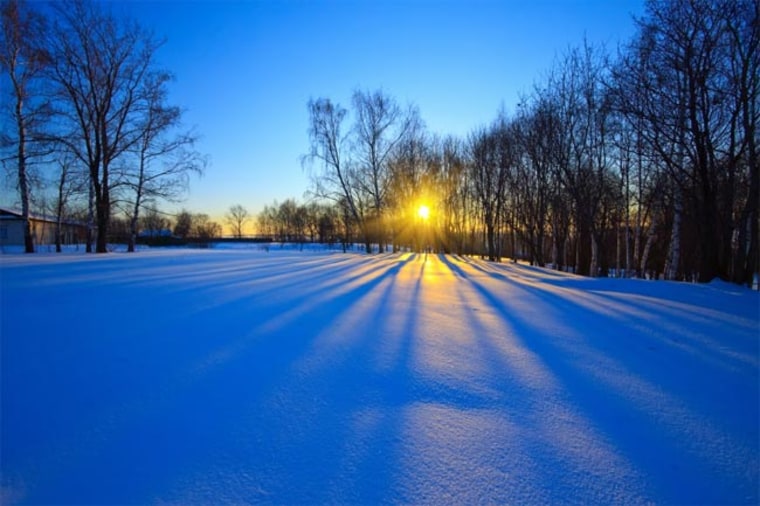Mother Nature apparently didn't get the memo that winter officially starts Tuesday, at least on the astronomical calendar.
More exactly, the winter solstice begins at 6:38 p.m. EST (2338 UTC) on Dec. 21.
And this year we're in for a treat. In a rare event that hasn't happened in 372 years, a total lunar eclipse will coincide with the winter solstice this year early Tuesday morning. The lunar eclipse — when the Earth moves between the full moon and the sun, blocking the sun's light from bouncing off the lunar surface — is expected to wow earthlings. [ Top 10 Amazing Moon Facts ]
Though not visible, the winter solstice is an astronomical feat. Here's how it works: The Earth is tilted on its axis 23.5 degrees, so it leans one way as it spins around its axis while orbiting the sun. On Dec. 21, the top half of our planet (everything north of the equator) will face directly away from the sun, leaving the North Pole in complete darkness.
For Santa's elves and reindeer, the real feel of winter began long ago, of course. In fact the sun set at the North Pole in late September, and there has been no sunlight nor even twilight since early October. Dawn won't break until early March.
For those of us not near Santa's hut, we'll still notice the effect of all this tilted science, though not so dramatically. On Tuesday, the sun will cross the sky at its lowest trajectory as seen from the Northern Hemisphere, and so its apparent trek from rising to setting will be quick. Result: the shortest day of the year and the longest night.
On the bright side, starting Tuesday the days will begin getting longer.
Where most of us live in the mid-latitudes, daylight ranges from about 15 hours around the summer solstice (when the Northern Hemisphere is tilted toward the sun) to around 9 hours close to the winter solstice. The opposite happens in the Southern Hemisphere, and as such, summer gets its official start there this week.
With less sunlight energy hitting us, temperatures drop. However, the Earth is actually closer to the sun during winter in the Northern Hemisphere. It's the tilt that gets us.
And in fact the coldest days of the year are yet to come. Though the days will get longer during January, Northern Hemisphere oceans continue to cool in the relative lack of sunlight, and ocean temperatures drive much of the weather on the continents.
If you're looking to travel to warmer climes, here's how to choose a venue: On Tuesday, the sun will be positioned directly over the Tropic of Capricorn, which is a circle of latitude (at 23.5 degrees south latitude) that marks maps of Earth and passes through South America, the southern tip of Africa and Australia. These spots might be your best bet to catch some rays.
Our dance around the sun has been the basis of calendars as long ago as the fourth century B.C. Such peoples in the Americas even built solar observatories of stone to mark the solstices and other times important for planting or harvesting crops. Shrines and even tombs were also designed with the sun in mind.
